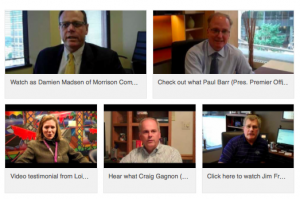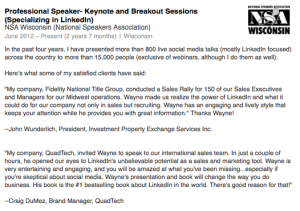I'm pretty sure that sometime during this holiday shopping season you checked the ratings of a specific product and/or researched what others said about something you wanted to purchase. What others are saying is called social proof.
Whether it's a hamburger, a computer, or even a new accountant, we are all looking for information (including social proof) to help us make our decisions.
Here's how Hubspot defines social proof:
Social proof, also referred to as "informational social influence," is the concept that people will conform to the actions of others under the assumption that those actions are reflective of the correct behavior. In other words, it's the mentality that, if other people are doing it, and I trust those people, that's validation that I should also be doing it. This third-party validation can be a very powerful motivator for your site visitors' and prospects' actions. - Hubspot blog 4/17/12
How's Your Social Proof
Is your social proof helping or hurting you or is it simply absent on most of your online addresses (website, Facebook, LinkedIn, etc.)? Do you have a 4.7/5.0 rating like your favorite restaurant on Yelp or Trip Advisor?
Even though it might not be quite as easy for you as an individual to accumulate a rating, there are specific things you can do to improve your social proof on LinkedIn.
I'm not just referring to the obvious LinkedIn sections--recommendations and Skills and the Endorsements that attach to them. These are very important places to show social proof, but there are some other great ways to share positive ratings and reviews about you and your company.
Easy Ways to Share Your Social Proof
These LinkedIn profile sections and activities can help you highlight and share your social proof:
Professional Portfolio. There are lots of ways to use this add-on  to your Summary, Job Experience or Educational sections. You can share video testimonials, traditional written customer recommendations, case studies, and success stories.
to your Summary, Job Experience or Educational sections. You can share video testimonials, traditional written customer recommendations, case studies, and success stories.
Projects. This is a good spot to include case studies or success stories, and you can link to web pages that include more details. You can also identify other LinkedIn members who were involved in a project and include a link to their LinkedIn profiles.
Individual or company status updates. Periodically share links in your status updates to case studies, success stories, and articles that highlight your capabilities.
Published Post. This new feature is now available to all members. You can display a long-form article, including an embedded video. This is perfect for highlighting customer testimonials and case studies. These will permanently show up near the top of your profile.
Honors & Awards. If you've got them, flaunt them.
Current Job Experience section. Extract a short quote from a recommendation and highlight awards you've received.
from a recommendation and highlight awards you've received.
Publications. Link to articles on your website or other sources that display your experience or awards and honors.
Certifications. These are great social proof because others (certifying organizations) are saying you met a certain level of proficiency.
So why not get busy and take advantage of these opportunities. It just may get you to that 4.7/5.0 score--or, better yet, how about a phone call or email from that sought-after prospect.
To join the conversation and get more LinkedIn tips, connect or follow me on:


